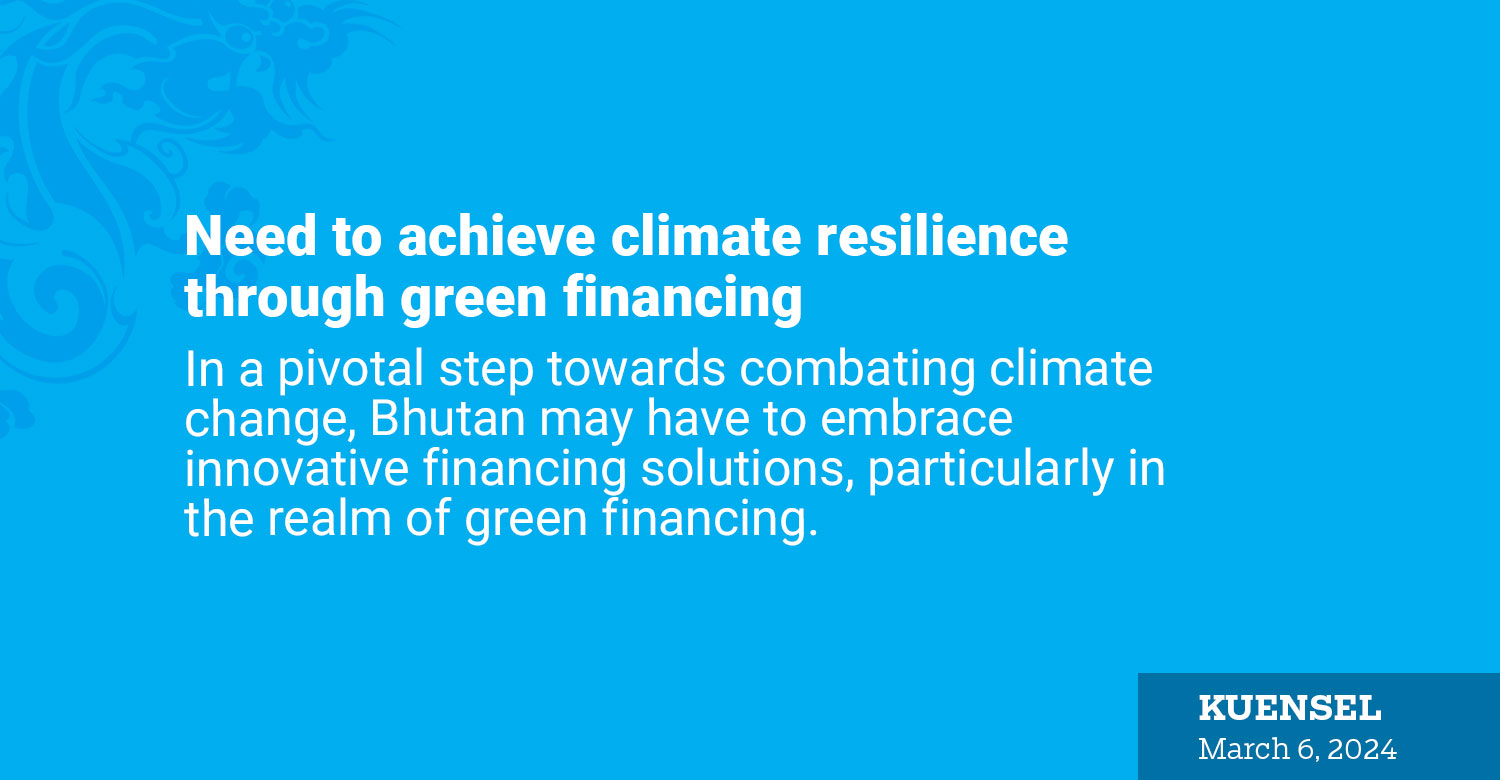
In a pivotal step towards combating climate change, Bhutan may have to embrace innovative financing solutions, particularly in the realm of green financing.
Green financing involves investing in projects that mitigate climate change and promote sustainable development and environmental conservation.
Recent research indicates a significant rise in temperatures in the Himalayan region, including Bhutan, with an average increase of 0.8 degrees Celsius over the past century. This trend is expected to lead to more frequent and intense weather extremes, including extreme heat and cold.
Currently, the Royal Monetary Authority is leading the development of a green finance roadmap.
The objective of this roadmap and green taxonomy is to establish a nationally agreed classification framework for activities contributing to climate change mitigation and adaptation, pollution prevention, resource conservation, and livelihood improvement within the context of green finance.
The Lecture of the College of Natural Resources, Dr. Om Katal said it has the potential to be transformative and could be part of the national financial landscape to implement climate change priorities in Bhutan.
He said that it is importantto utilise local resources, such as hydropower, to fund conservation efforts.
Furthermore, Dr Om Katal said that initiatives like payment for ecosystem services (PES), incentivize communities to protect watershed areas crucial for hydropower generation. Such initiatives create a win-win situation where both environmental conservation and economic development can thrive.
PES has been piloted at the watershed level in Mongar and is seen as a potential financing source for conservation efforts stemming from hydropower projects.
The proposal for establishing the Bhutan Climate Fund, financed through the transboundary sale of emission reduction credits from hydropower projects, aims to fund the implementation of national climate change priorities. However, this proposal is still in its conceptual stages and requires further development based on developments under Article 6 of the Paris Agreement.
Challenges
Despite Bhutan’s proactive efforts in addressing climate change, the country faces significant challenges in accessing adequate funding for adaptation measures.
There is a substantial gap between the financing required for adaptation globally and the amount of financing available.
Dr Om Katal said that there is a need for Bhutan to receive funds and support from countries with higher greenhouse gas emissions, highlighting the principle of shared responsibility in addressing climate change.
He pointed out that estimated adaptation costs for developing countries like Bhutan are several times greater than current public adaptation finance flows. However, many funding mechanisms require adaptation projects to be distinguished from development initiatives, despite the interconnected nature of climate change and development.
UNEP estimates that adaptation costs will continue to rise and could reach up to USD 500 billion per year by 2050 for developing countries alone. Dr Katal stressed that adaptation responses build on past or on-going investments in development and that measures required for adaptation also yield development benefits.
As Bhutan confronts these challenges, leveraging green financing can strengthen the country and make it more resilient to climate change. By collaborating and exploring new avenues to fund vital projects, Bhutan aims to create a future that is environmentally sustainable and resilient to adversity.












